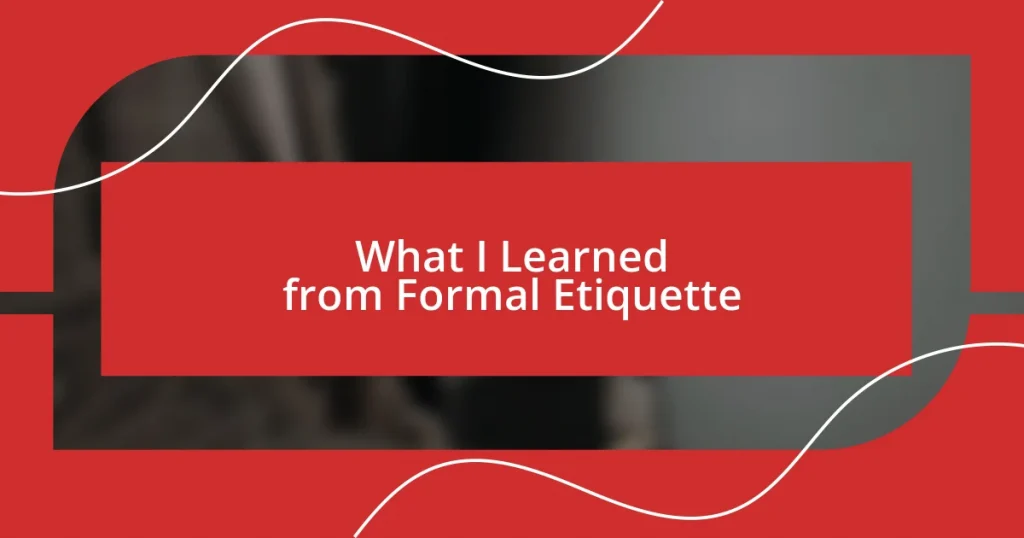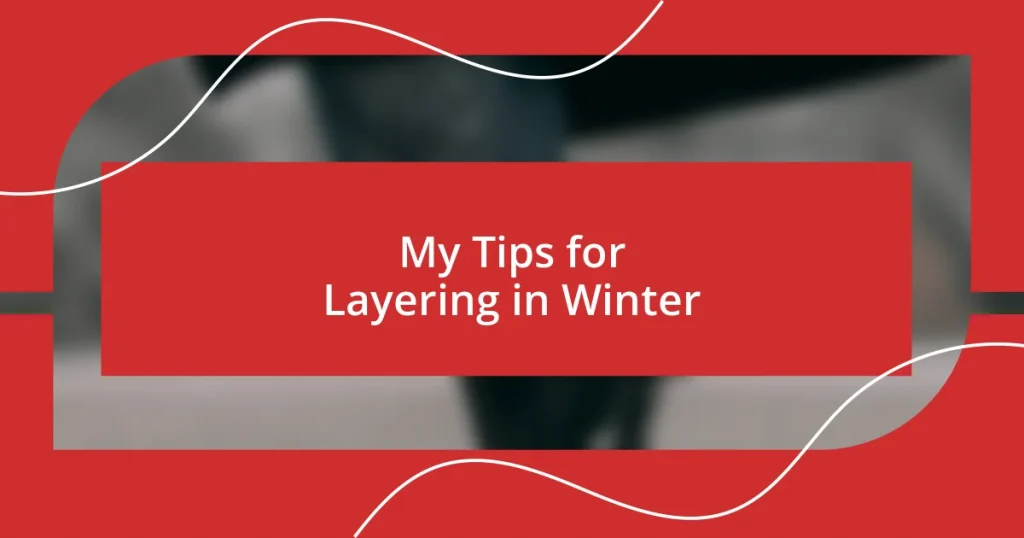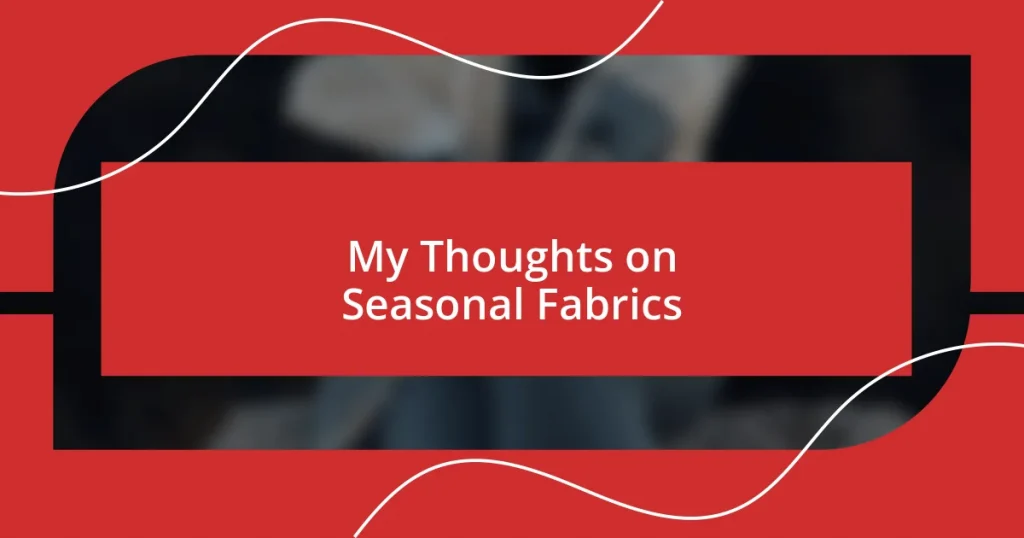Key takeaways:
- Formal etiquette enhances social interactions through small gestures like eye contact, body language, and respecting others’ personal space, fostering connections and comfort.
- Understanding and adhering to etiquette can boost self-confidence, as it provides a framework for communication and behavior during formal events.
- Dressing appropriately for occasions shows respect for hosts and enhances one’s presence, impacting how others perceive and engage with you.
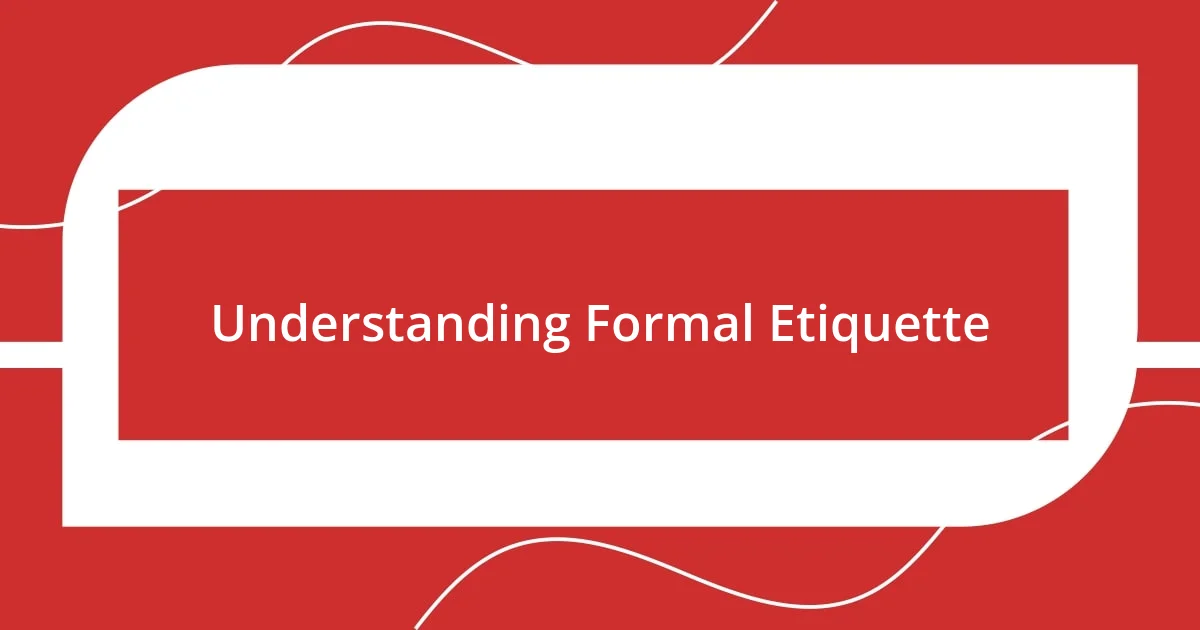
Understanding Formal Etiquette
Formal etiquette can sometimes feel like a maze, filled with unwritten rules and complex nuances. I remember walking into my first formal event, feeling the weight of expectations in the air. It made me wonder: Was it about the right outfit or how I greeted people? Ultimately, I realized it’s a blend of confidence, awareness, and respect for others.
In navigating formal etiquette, I found that the little things matter greatly, like knowing when to use first names or how to handle cutlery at a fancy dinner. Just the other day, I was at a formal gathering where someone nearly dropped their fork. The tension in the room was palpable! It taught me that everyone is learning, and a smile can ease the anxiety of formal situations. Isn’t it fascinating how simple gestures can bridge the gap between strangers?
I also learned that understanding formal etiquette extends beyond mere behavior; it’s about developing empathy and awareness of cultural differences. For instance, at a multicultural event, I was taken aback by different greeting styles. It made me reflect on how beautifully diverse our interactions can be. Have you ever wondered how etiquette varies across cultures? Recognizing these differences can enhance not only your understanding but also your connections with others.
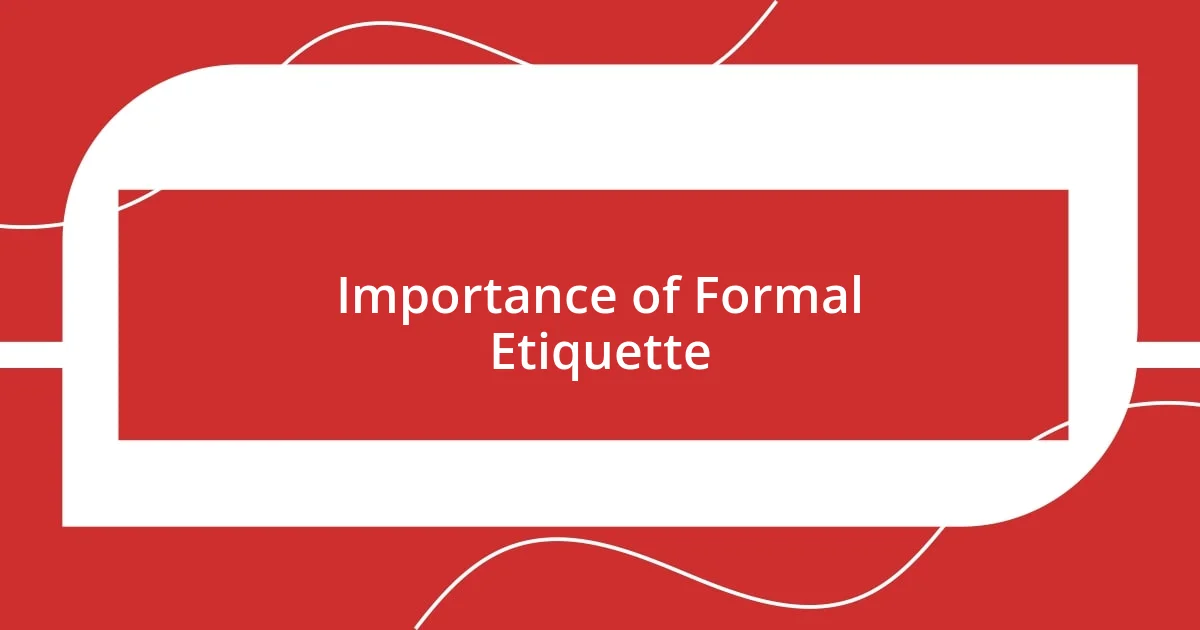
Importance of Formal Etiquette
Understanding the importance of formal etiquette is truly eye-opening. I remember attending a formal dinner where everyone seemed to glide effortlessly through conversation and interaction. It struck me how a simple act of courteous behavior—like standing when someone enters the room—can profoundly affect the atmosphere and the respect shown toward guests. This made me think: isn’t it incredible how such small gestures can convey thoughtfulness and care?
Even more surprising, I’ve found that formal etiquette bolsters self-confidence. At my first formal interview, I was a bundle of nerves, but adhering to the etiquette made me feel more grounded. It equipped me with a framework of behavior to follow, allowing me to focus less on my anxiety and more on connecting with my interviewer. Have you ever felt that having a clear set of guidelines can boost your confidence in challenging situations?
Moreover, I’ve learned that formal etiquette serves as a shared language among people from different walks of life. During a charity gala, I witnessed how proper introductions and thoughtful exchanges broke down barriers between guests who would otherwise remain strangers. In that moment, I realized that adhering to etiquette isn’t just about following rules; it’s a way to create collective comfort and foster meaningful connections.
| Aspect | Importance |
|---|---|
| Respect | Shows consideration for others’ feelings and establishes a positive environment. |
| Confidence | Provides a framework, helping individuals feel more secure in social interactions. |
| Connection | Facilitates relationships by creating a common ground among diverse individuals. |
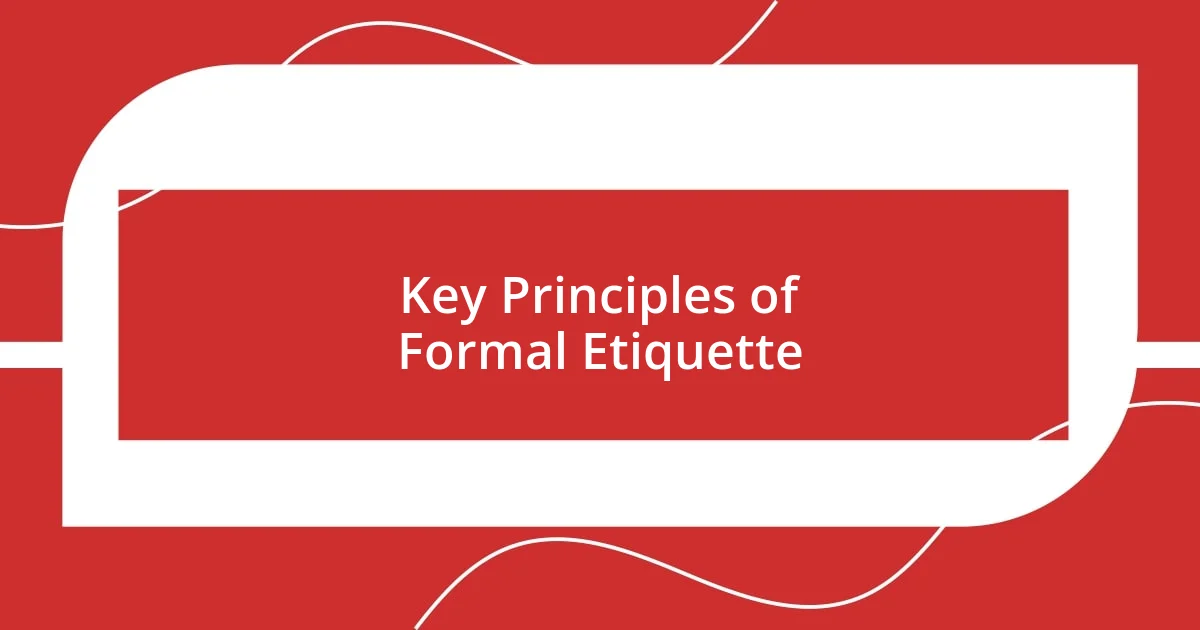
Key Principles of Formal Etiquette
I’ve come to appreciate that the key principles of formal etiquette revolve around respect, awareness, and clarity in communication. I recall a situation where I inadvertently interrupted a speaker during a presentation. The subtle shift in their expression was a gentle reminder of how important it is to be conscious of timing in conversations. Etiquette isn’t just about rules; it’s about being aware of how your actions affect others.
- Respect: Acknowledge others’ feelings and space.
- Awareness: Recognize the dynamics of the room, including body language.
- Clarity: Use direct yet polite communication to avoid misunderstandings and promote smooth interactions.
In my experiences, I often find that how I present myself matters as much as what I say. I remember attending a gala where everyone wore elegant attire and carried themselves with poise. It instantly made me aware of how an outfit can influence perceptions. When I dressed the part and embraced good posture, I felt a shift in my confidence. That night, I learned that personal presentation is an extension of one’s respect for the occasion and the people present.
- Presentation: Dress appropriately for the event to show respect.
- Posture: Maintain good posture to convey confidence and engagement.
- Greeting: Approach others warmly, establishing a friendly atmosphere.
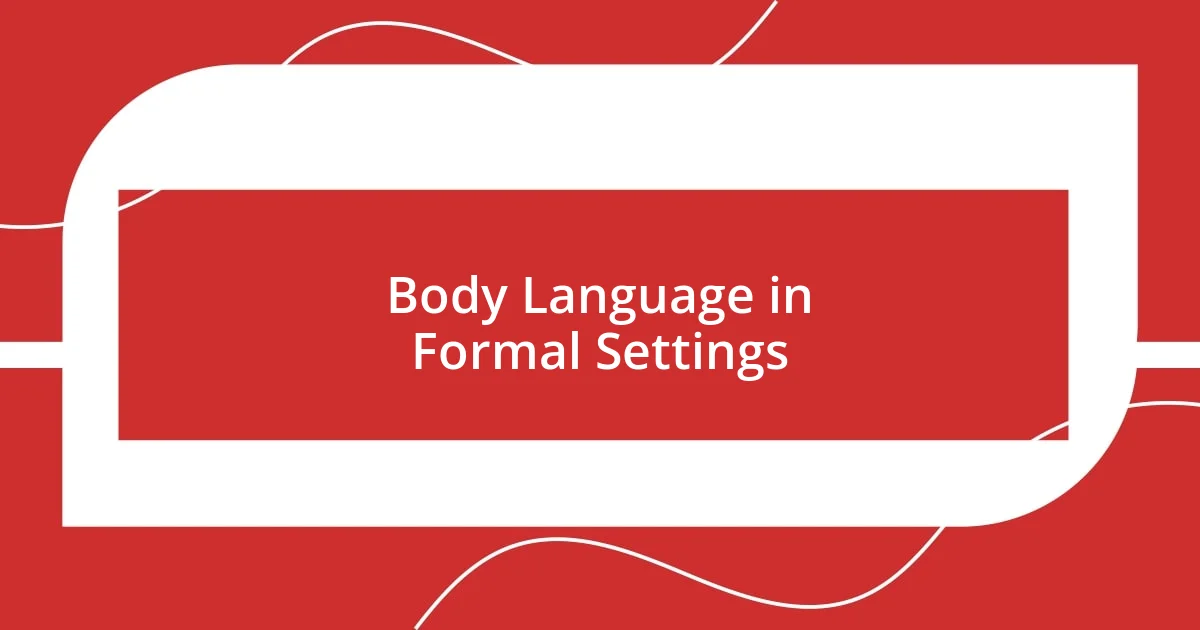
Body Language in Formal Settings
One of the most striking lessons I’ve absorbed about body language in formal settings is the power of eye contact. During a formal presentation, I became acutely aware of how maintaining eye contact with the speaker not only showed my engagement but also cultivated a connection. Have you ever noticed how a simple gaze can speak volumes? I certainly felt it when someone looked directly at me; it felt affirming and engaging.
Additionally, posture plays a pivotal role in how you are perceived. I remember standing for a formal group photo, aware that my stance communicated a lot more than my words. Standing up straight and displaying an open posture made me feel not only more confident but also more approachable. It made me wonder—does our body truly reflect our inner feelings and confidence?
Moreover, subtle gestures, like nodding during conversations, can enhance dialogue significantly. I recall a networking event where I noticed that nodding when others spoke not only encouraged them but also made me seem more invested in what they were saying. It’s fascinating how those tiny gestures transform interactions and create an inviting atmosphere, isn’t it?
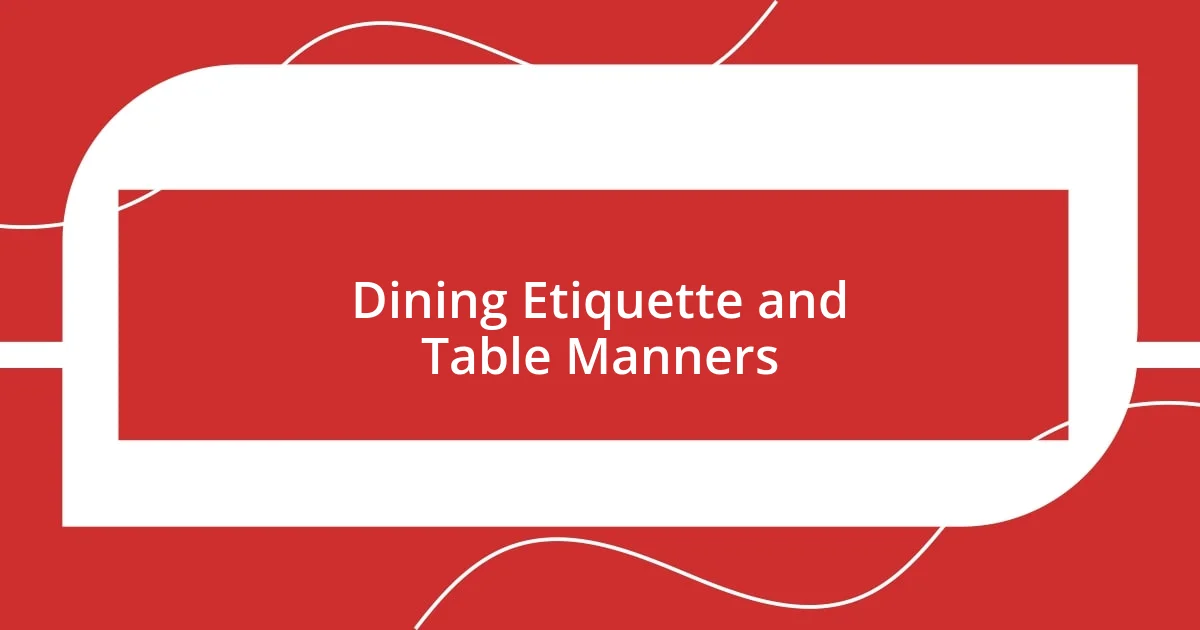
Dining Etiquette and Table Manners
Dining etiquette is an essential aspect of formal gatherings, and I’ve learned that it’s as much about the food as it is about the people you share it with. I remember attending a formal dinner where the waitstaff served each course with such precision and grace that I felt compelled to mirror their poise. Did you ever notice how the rhythm of the meal can create a shared experience? I felt that evening’s conversations flowed more freely because everyone adhered to the same unspoken rules, allowing us to connect over our meal without distractions.
Proper use of cutlery can seem daunting, especially when faced with a daunting array of utensils. I once sat at a table laden with more forks, knives, and spoons than I could count. Initially overwhelmed, I recalled a simple rule: start from the outside and work inward with each course. This was a game changer for me! Have you ever enjoyed a meal more fully because you were more relaxed about how to eat? Knowing the etiquette allows you to focus on the engaging conversations rather than the worries about which utensil to use next.
Table manners extend beyond just utensils; they also encompass our engagement with others. I recall a lunch where one guest repeatedly interrupted others, creating a palpable tension. It struck me then how vital it is to show restraint and allow others to speak. Have you ever been in a situation where you felt unheard? Practicing good table manners means not only eating politely but also fostering an environment where everyone feels appreciated—a lesson that resonates deeply with me.
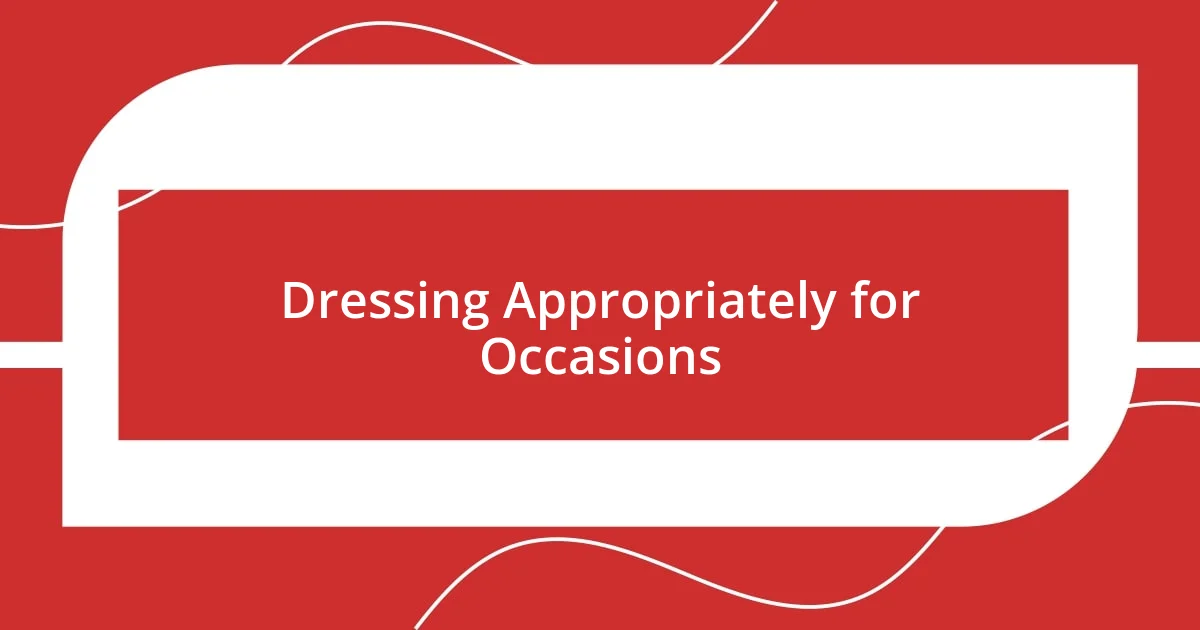
Dressing Appropriately for Occasions
Choosing the right outfit for any occasion can be a game changer, and I learned this the hard way. I once attended a wedding in casual attire when the invitation clearly suggested semi-formal wear. The moment I arrived and saw everyone dressed elegantly, I felt out of place and embarrassed. Have you ever experienced that sinking feeling of realizing you misread the dress code? It really hit home how important it is to dress appropriately not just for the event, but also out of respect for the hosts and the occasion itself.
On another occasion, I found myself in a professional networking event. I wore a tailored suit that made me feel both confident and powerful. I could see people responding differently to me—a well-fitted outfit can elevate your presence significantly. I remember chatting with a colleague who remarked on my attire, which opened up a door for deeper, more meaningful dialogue. Isn’t it interesting how attire can shift the dynamic of a conversation?
The subtle nuances of dressing appropriately can also vary by culture. When I traveled abroad for a business trip, I made sure to observe the local customs. In one meeting, I noticed that traditional attire was respected, so I opted to wear local-inspired pieces. This decision fostered an immediate rapport, leading to fruitful discussions. Have you ever thought about how attire could bridge cultural gaps? It was eye-opening to understand that being mindful of what we wear can express understanding and respect for others.
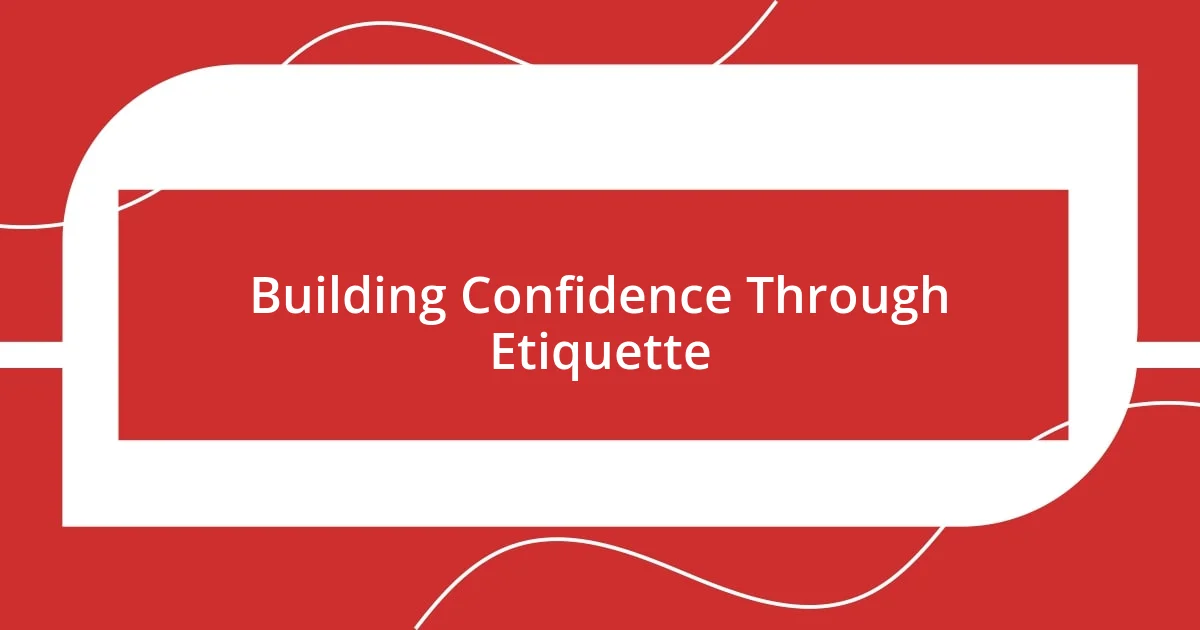
Building Confidence Through Etiquette
Building confidence through etiquette is something I’ve experienced firsthand. I recall my first formal event where I was nervous about making a mistake. But as soon as I reminded myself of the etiquette guidelines I had learned, I began to observe how simply adhering to those rules transformed my posture and demeanor. It felt like wearing an invisible armor that shielded me from self-doubt. Have you ever noticed how knowledge can alter your confidence level?
Another memorable moment was during a business meeting where I took the lead role. I walked in armed with confident body language, keen awareness of polite conversation, and thoughtful introductions. It was fascinating to see how the other participants responded; they seemed to mirror my confidence. In that atmosphere of respect and professionalism, I felt empowered to contribute meaningfully. Did you ever realize how your behavior can influence the vibe of a room?
Etiquette isn’t just about following rules; it’s also about feeling comfortable and self-assured in social settings. I remember a networking event where I focused on listening actively rather than worrying about what to say next. This shift in approach made me feel genuinely connected to others, which in turn enhanced my confidence. Have you ever noticed how engaging with others can turn your nervousness into assurance? By embracing etiquette, I learned that real confidence comes from creating authentic connections.










